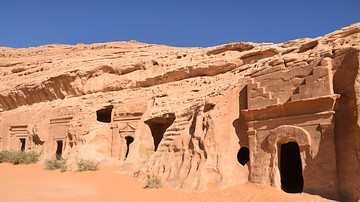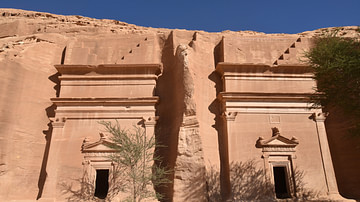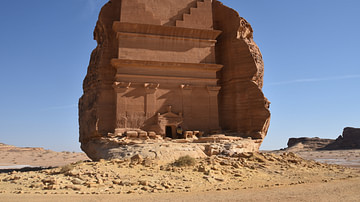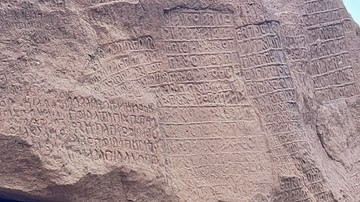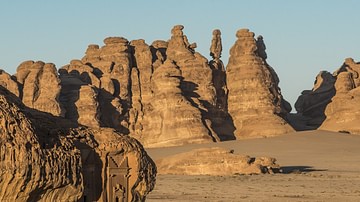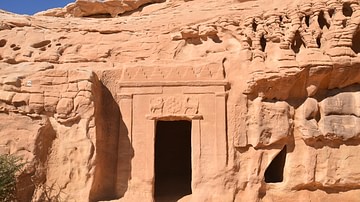Illustration
The Jabal al-Ahmar Necropolis in Hegra (Mada'in Salih) in modern-day Saudi Arabia is one of the four necropolis areas to have survived. It contains 18 tombs, some of which were recently uncovered. The remains of a 2,000-year-old Nabatean woman, Hinat, were excavated from one of the tombs. In 60 or 61 CE, Hinat had carved the following message onto a panel above the entrance to her tomb: "This is the tomb which Hinat, daughter of Wahbu, made for herself and for her children and her descendants forever. And no one has the right to sell it or give it in pledge or write for this tomb a lease. And whoever does other than this, his share will revert to his legitimate heir. In the twenty-first year of King Maliku, King of the Nabataeans."
Hegra was the southernmost capital of the Nabatean people, a once-nomadic Arabian tribe that settled and grew wealthy from trade in frankincense, spices, and other luxury commodities. The Nabatean city peaked between about 50 BCE and 106 CE. Hegra is Saudi Arabia’s first UNESCO World Heritage Site.
About the Author
Cite This Work
APA Style
Raddato, C. (2024, February 27). Jabal al-Ahmar Necropolis in Hegra. World History Encyclopedia. Retrieved from https://www.worldhistory.org/image/18531/jabal-al-ahmar-necropolis-in-hegra/
Chicago Style
Raddato, Carole. "Jabal al-Ahmar Necropolis in Hegra." World History Encyclopedia. Last modified February 27, 2024. https://www.worldhistory.org/image/18531/jabal-al-ahmar-necropolis-in-hegra/.
MLA Style
Raddato, Carole. "Jabal al-Ahmar Necropolis in Hegra." World History Encyclopedia. World History Encyclopedia, 27 Feb 2024, https://www.worldhistory.org/image/18531/jabal-al-ahmar-necropolis-in-hegra/. Web. 07 May 2025.




